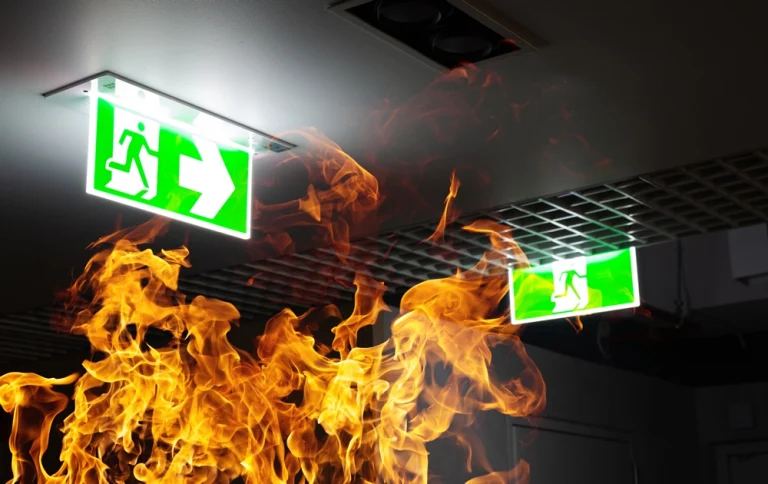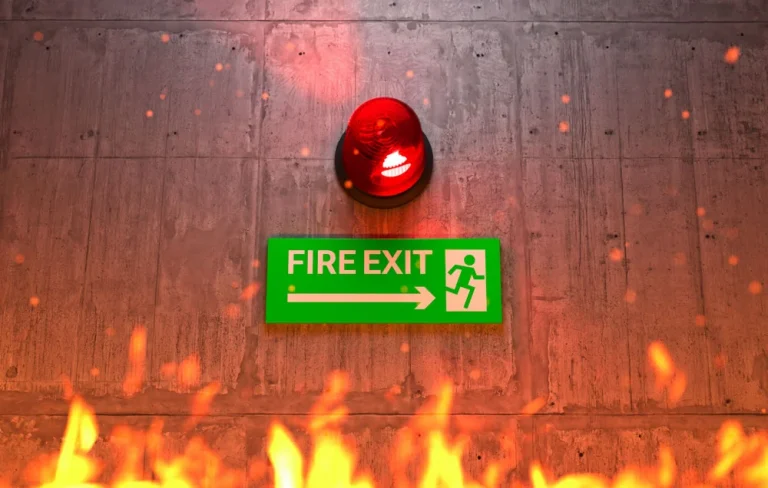For organisations of all sizes, ensuring workplace safety is a top priority. One critical aspect of workplace safety is fire risk assessment. Creating a comprehensive fire risk assessment plan not only protects your employees and customers but also helps you comply with legal requirements.
In this article, we will explore the essential approach to fire risk assessment and workplace safety that every business should implement.
As we delve into the topic, we will discuss the importance of conducting a fire risk assessment, the key steps involved in the process, and the potential hazards that need to be considered.
Additionally, we will highlight the measures you can take to effectively minimise fire risks and create a safe working environment with the help of technology.
By following this essential approach to fire risk assessment and workplace safety, you can protect both employees and assets.

Understanding Fire Risk Assessment and Workplace Safety
Fire risk assessment is a crucial step in safeguarding your business against potential fire incidents. By identifying and assessing potential fire hazards, you can implement control measures to reduce the risk of fires and create a safe working environment.
This not only protects your employees and assets but also enhances your reputation as a responsible business.
Conducting a risk assessment allows you to evaluate the likelihood and impact of fire hazards in your workplace. It helps you understand the vulnerabilities and areas that require improvement, enabling you to take proactive measures to minimise risks.
Additionally, a thorough risk assessment demonstrates your commitment to workplace safety and compliance with legal requirements.
Your Legal Requirements
Fire risk assessment is not just a best practice; it is a legal requirement in many jurisdictions. Legislation varies from country to country, but most have specific regulations that businesses must adhere to regarding fire safety. Failing to comply with these regulations can result in fines, legal actions, and reputational damage.
In the United States, for example, the Occupational Safety and Health Administration (OSHA) requires businesses to conduct fire risk assessments as part of their overall workplace safety efforts.
Similarly, the UK has the Regulatory Reform (Fire Safety) Order 2005, which mandates that businesses carry out fire risk assessments and implement appropriate control measures.
It is essential to familiarise yourself with the specific legal requirements in your jurisdiction to ensure compliance. By conducting regular risk assessments and implementing the necessary safety measures, you can protect your business from legal consequences and create a safe workplace.
Examples of Fire Risk Assessments
Fire risk assessments can vary depending on the nature of the workplace.
Examples include:
General Fire Risks: Assessing fire safety equipment such as extinguishers and blankets.
Office Fire Risks: Evaluating safety measures specific to office environments, like functioning smoke alarms and clear fire escape routes.
Explosion Risks: Reviewing procedures for handling hazardous substances that could lead to explosions or fires.
Let’s take a closer look at the construction and manufacturing sectors, where fire hazards are particularly prevalent.
In construction, flammable materials, electrical systems, and hot work activities pose significant risks. A simple negligence in adhering to safety protocols can swiftly escalate into a full-blown inferno, endangering workers and bystanders alike.
Similarly, manufacturing facilities often house combustible materials and machinery, amplifying the potential for fire incidents.
In both industries, the consequences of inadequate fire safety measures can be dire. Not only are lives at stake, but businesses also face the prospect of extensive downtime, regulatory penalties, and reputational damage. It’s imperative for organizations to prioritise fire safety as an integral component of their risk management strategies.
Steps to Conduct a Thorough Fire Risk Assessment
Conducting a thorough fire risk assessment involves a systematic approach to identify and evaluate potential fire hazards in your workplace.
Follow these steps to ensure a comprehensive assessment:
- Identify potential fire hazards: Start by identifying all potential fire hazards in your workplace. This may include flammable substances, faulty electrical equipment, inadequate ventilation, or improper storage of combustible materials.
- Assess the likelihood and impact of fire hazards: Once you have identified the potential fire hazards, assess their likelihood of occurring and the potential impact they could have on your workplace. Consider factors such as the frequency of use, proximity to ignition sources, and potential spread of fire.
- Implement control measures to mitigate fire risks: Based on your assessment, implement appropriate control measures to mitigate fire risks. This may include installing fire suppression systems, ensuring proper storage and labelling of flammable materials, and conducting regular maintenance of electrical equipment.
- Create a fire safety plan and emergency procedures: Develop a comprehensive fire safety plan that outlines the necessary procedures in case of a fire. This should include evacuation routes, assembly points, and protocols for alerting authorities and employees.
- Training employees on fire safety and prevention: Educate your employees on fire safety measures and prevention techniques. Provide training on the proper use of fire extinguishers, evacuation procedures, and the importance of reporting potential fire hazards.
- Regularly reviewing and updating fire risk assessments: Fire risk assessments are not a one-time event. Regularly review and update your assessments to account for any changes in your workplace environment, processes, or regulations.

Simplify How you Manage Fire Risk Assessment
As mentioned above regular reviews, updates, training of employees are crucial to maintain and improve fire risk management. However, if you are managing risk assessment manually, with paper documents or excel sheets this process will be complicated to manage over time.
With the help of Health and safety management software, you can simplify how you manage fire risk assessment by centralising your records, sending automated notifications and mapping your risks. In addition, you can regularly review your teams training records in a central system to ensure their refresh their knowledge and more.
Importance of Health and Safety Software in managing Fire Risk Assessment
Health and Safety software plays a pivotal role in simplifying and enhancing the fire risk assessment process.
Here’s how:
Centralised Data Management: Health and Safety software allows for the centralisation of all fire safety-related data, including assessment reports, action plans, and training records. This ensures easy access and retrieval when needed.
Automated Reminders: It can automate reminders for regular assessment reviews, ensuring compliance with legal requirements and proactive risk management.
Risk Mapping: Advanced health and safety software for risk assessment offer tools for mapping fire risks spatially within a facility, helping prioritise areas for mitigation efforts.
Integration with Incident Management and Action Tracking: Integration with incident management and action tracking modules enables swift response and resolution of fire-related emergencies.
Analytics and Reporting: Robust analytics capabilities provide insights into trends, enabling continuous improvement of fire safety measures.
Conclusion: Prioritising a Safe and Secure Workplace
Fire safety risk assessment is an essential aspect of workplace safety that every business should prioritise. By conducting a thorough assessment, identifying potential fire hazards, and implementing control measures, you can significantly reduce the chances of fire incidents and protect both their employees and assets.
Compliance with legal requirements is crucial, as failing to do so can result in severe consequences. Regularly reviewing and updating fire safety risk assessments ensures that your safety measures remain up to date and effective.
Remember, fire risk assessment is an ongoing process, and it requires continuous monitoring and improvement. By adopting a proactive approach with the help of EHSwise – Health and Safety Risk Assessment Software, you can mitigate risks, prevent potential disasters, and create a safe workplace.


